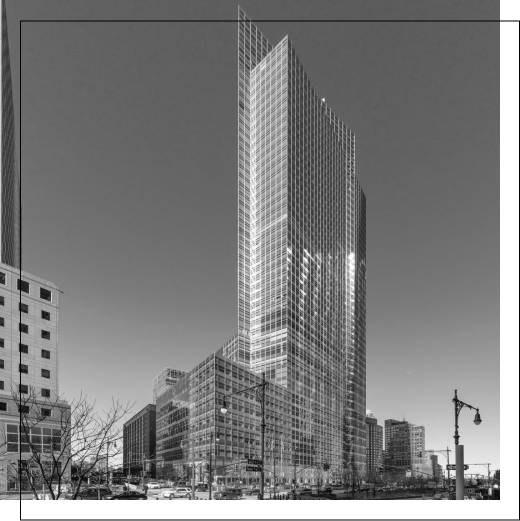Silverstein Properties, known for reviving New York’s World Trade Center after Sept. 11, and Metro Loft Management bought a 30-story building in the Financial District for $172.5 million for what’s billed as one of the city’s largest office-to-residential conversions.
Silverstein and Metro Loft want to overhaul the 410,000-square-foot structure at 55 Broad St. — an office of investment banking giant Goldman Sachs decades ago — to turn it into a 571-unit apartment tower, the developers said Monday in a statement.
The project represents Silverstein’s first foray as an active developer in an office-to-residential conversion, a company spokesperson told CoStar News. Metro Loft has decades of experience converting New York properties.
Turning old office buildings to other uses, primarily apartments, has gained momentum in New York and other cities since layoffs, economic uncertainty and remote and hybrid work schedules led some companies to cut back on space.
The property’s seller, the Rudin Family, will retain an equity stake in the project. Funds managed by Ares Real Estate also acquired a preferred equity interest in the redevelopment, Silverstein and Metro Loft said.
“As our local and national policymakers look to conversions as a critical way to generate new housing, downtown continues to be a model mixed-use neighborhood, offering lessons to cities across the country,” Marty Burger, chief executive of Silverstein, said in the statement.
Record-High Rent
New York’s average apartment asking rent per unit has risen to a record high of over $3,000 a month while rent in the Financial District has jumped to a record of $4,470, CoStar data shows.
While office-to-residential conversions hold “intuitive appeal,” floorplate size and cost are among issues that will limit projects and make them relatively rare around the country, CoStar Group analysts said in a recent study.
But in lower Manhattan, following initial waves of conversion projects in the 1990s and early 2000s, more than 19 million square feet of offices in the area have been converted into apartments since 1995, the developers said, citing the Alliance for Downtown New York. Recently completed or marketed office-to-residential projects have included One Wall Street, a 56-story art deco landmark, into luxury residential condos.
The spate of conversions is a sign of lower Manhattan transforming into a 24/7 livable domain.
Lower Manhattan had 34,243 units in 345 residential buildings in the first quarter, with 5,776 units in 18 buildings under construction or planned for development, according to the Alliance for Downtown New York.
New York Mayor Eric Adams has pointed to the area’s success as a case study for midtown, where there’s also increased talk of looking into converting some vacant office properties to residential use, the developers said.
The bet on multifamily comes as CoStar data shows office vacancies in New York, the top U.S. commercial property market, have topped 13%, a record high. The national office vacancy rate has also reached a record high of over 13%. Meanwhile, the average U.S. apartment asking rent is sitting at a record of $1,674 a month.
In 2021, Silverstein acquired 116 John St. in lower Manhattan, which had already been converted to residential use in 2013 by Metro Loft. Silverstein developed, owns, and manages two residential rental buildings on 42nd Street in midtown Manhattan — Silver Towers and River Place — with a total of 2,280 units, including 548 affordable housing apartments.
Conversion Experience
Metro Loft, billed as a pioneer in office-to-residential conversions in lower Manhattan, has spent the past two decades redeveloping iconic Manhattan landmarks such as 443 Greenwich St., 20 Exchange Place, 63 Wall St., 67 Wall St.,180 Water St. and 20 Broad St., the developers said in the statement.
Banco Inbursa of Mexico City, which has had a long relationship with Silverstein, provided debt financing for the latest project at 55 Broad, the developers said.
Gary Phillips from Eastdil served as the broker in the transaction, and also arranged financing with Christopher Peck from JLL.
Designed by Emery Roth & Sons, 55 Broad, opened in 1967, served as the headquarters for Goldman Sachs until 1983, according to the developers. CetraRuddy Architecture will design the conversion project. The building is about 60% occupied.
CoStar data shows nonprofit Uncommon Schools is the largest tenant with 25,400 square feet occupied with its lease expiring next year.
Construction is expected to begin next month and will be completed over a two-year period with layouts ranging from studios to three-bedroom apartments. Amenities at 55 Broad will include a private club, wellness and fitness activities, a coworking space, and multiple social spaces, in addition to a 45-foot-long rooftop pool, landscaped sundeck and grill area, the developers said.


